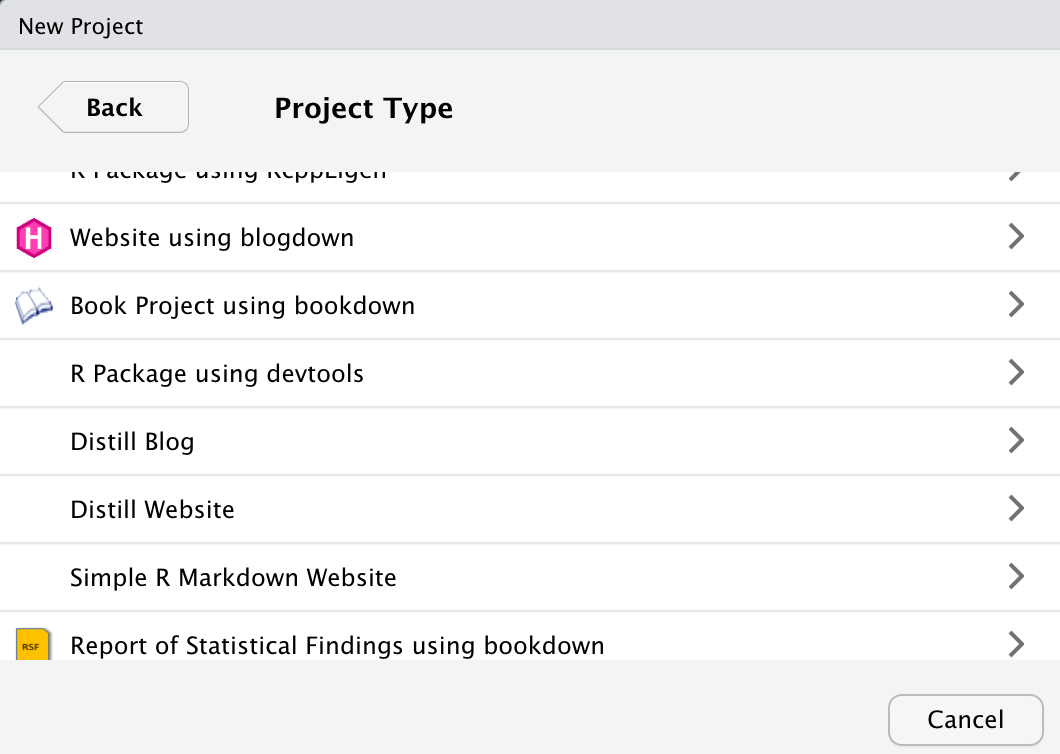Table of Contents
How to set the blog up
For me as a go between R and Python it is still a big argument for R that it is so easy to create html reports which can be distributed without the need of any software installation on the receiving side. That is why I used R to create my blog, however, it might very well that I am just unaware of an equally good or better option with Python.
Following the instructions on https://rstudio.github.io/distill/blog.html using RStudio and the programming language R it took about 2h to get the blog up and running on gitHubPages. The integration of distill in RStudio makes it even easier to start a blog. Creating a blog from within RStudio is done in the “new project” dialog.

Example blog TensorFlow for R Blog
A impressive example of a distill based blog isTensorFlow for R Blog https://blogs.rstudio.com/tensorflow/
The code of the blog can be found at https://github.com/rstudio/tensorflow-blog
Create new posts
To create a new blog the command in RStudio is
library(distill)
create_post("The Sharpe Ratio")This will create a sub-directory for your post within the _posts directory, add a stub Distill article, and open the article for editing.
If you want to write a draft first add the option
create_post("The Sharpe Ratio", draft = TRUE)Add preview image
How to define the image in the preview of the blog check the “Preview images” section at https://rstudio.github.io/distill/blog.html
html widgets
Including htmlwidgets within a Distill article is as easy as including an R plot. For example, the following code embeds a Leaflet map:
You can also use figure layout options with htmlwidgets. For example, here we set layout=“l-page” to specify that we want the widget to span the width of the page:
more info on how to add html widgets can be found at https://rstudio.github.io/distill/interactivity.html
Add citations
BibTeX is the supported way of making academic citations. To include citations, first create a BibTeX file and refer to it from the bibliography field of the YAML front-matter. For example:
title: “Create a blog with Distill”
description: |
Tutorial to build a blog with Distill.
preview: images/CreateDistillBlog.png
bibliography: bib/bibliographyGeneral.bib
References can be included by [@wei2019benchmarking] which is displayed in the webpage as: (Wei, Brooks, and others 2019)
A reference is added at the end of the page. The text of the reference is shown while hoovering over the number.
Add footnote
A foodnote can be added with
^[This is a footnote added to a distill blog post] which is displayed in the webpages as:1
A footnote is added at the end of the page. The text of the footnote is shown while hoovering over the number.
Two columns layout
If you want to have two columns you can follow the instructions given in https://stackoverflow.com/questions/31753897/2-column-section-in-r-markdown
Alternative Python static web page generator Nikola
An alternative to distill would be Nikola https://getnikola.com
- Python based
- Can convert Jupyter notebooks to blog posts http://louistiao.me/posts/how-i-customized-my-nikola-powered-site/#ipython-notebooks
Theme blog with css
To theme a blog using css add to _site.yml
distill::distill_article:
self_contained: false
css: styles.cssadd the file style.css in the same folder as the .Rmd file
p.hometown {
background: yellow;
}and in the .Rmd file
<p>My name is Donald.</p>
<p class="hometown">I live in Ducksburg.</p>
<p>My name is Dolly.</p>
<p class="hometown">I also live in Ducksburg.</p>
to get:

Further information on distill and blogging
Learn more about using Distill at https://rstudio.github.io/distill
Creating a Blog is described in https://rstudio.github.io/distill/blog.html
Acknowledgments
Thanks RStudio for developing this oppertunity to write blogs easily.
Wei, Gu-Yeon, David Brooks, and others. 2019. “Benchmarking Tpu, Gpu, and Cpu Platforms for Deep Learning.” arXiv Preprint arXiv:1907.10701.
We’ll be using DP as an acronym for both the noun phrase “differential privacy” and the adjective phrase “differentially private”.↩